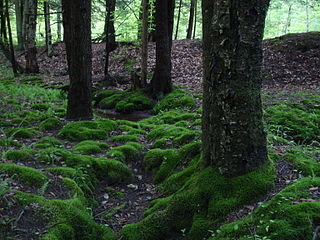
Mosses are small, non-vascular flowerless plants in the taxonomic division Bryophytasensu stricto. Bryophyta may also refer to the parent group bryophytes, which comprise liverworts, mosses, and hornworts. Mosses typically form dense green clumps or mats, often in damp or shady locations. The individual plants are usually composed of simple leaves that are generally only one cell thick, attached to a stem that may be branched or unbranched and has only a limited role in conducting water and nutrients. Although some species have conducting tissues, these are generally poorly developed and structurally different from similar tissue found in vascular plants. Mosses do not have seeds and after fertilisation develop sporophytes with unbranched stalks topped with single capsules containing spores. They are typically 0.2–10 cm (0.1–3.9 in) tall, though some species are much larger. Dawsonia, the tallest moss in the world, can grow to 50 cm (20 in) in height. There are approximately 12,000 species.

Sphagnum is a genus of approximately 380 accepted species of mosses, commonly known as sphagnum moss, also bog moss and quacker moss. Accumulations of Sphagnum can store water, since both living and dead plants can hold large quantities of water inside their cells; plants may hold 16 to 26 times as much water as their dry weight, depending on the species. The empty cells help retain water in drier conditions.
This article gives an overview of the mire plant communities in the British National Vegetation Classification system.
Stylidium tenellum is a dicotyledonous plant that belongs to the genus Stylidium. It is an annual plant that grows from 5 to 27 cm tall. The obovate or elliptical leaves, about 6-14 per plant, are scattered along the elongate, glabrous stem and are generally 3.5-8.5 mm long and 0.8-2.5 mm wide. Scapes are absent. Inflorescences are 2–8 cm long and produce white, pink, or mauve flowers that bloom from September to December in their native range. S. tenellum is endemic to Southeast Asia and its distribution ranges from southern India to southern China and south to Sumatra. In China it's known from Guangdong, Yunnan, and southern Fujian provinces. Its habitat is recorded as being seasonal swamps and is often reported to grow near rice paddies. It is usually found growing at low altitudes but has been recorded from elevations as high as 1100 metres on Sumatra. S. tenellum is most closely related to S. diffusum.

The small red damselfly is a small damselfly flying in heathland bogs and streams. It is in the family Coenagrionidae.

Beckley Bog is a sphagnum-heath-black spruce bog located near Norfolk in Litchfield County, Connecticut. It is the southernmost sphagnum heath bog in New England. The peat moss is over 51 feet deep. It was declared a National Natural Landmark in May 1977.
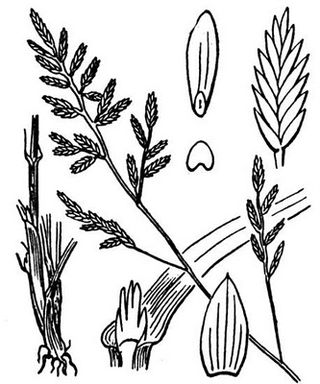
Catapodium is a genus of Eurasian and North African plants in the grass family.
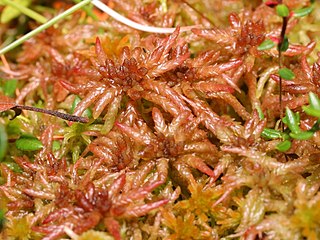
Sphagnum magellanicum, commonly called Magellanic bogmoss, Magellan's sphagnum, Magellan's peatmoss or midway peat moss, is a widespread species of moss found in wet boreal forest in the far south and southwest of South America, North America and Eurasia.
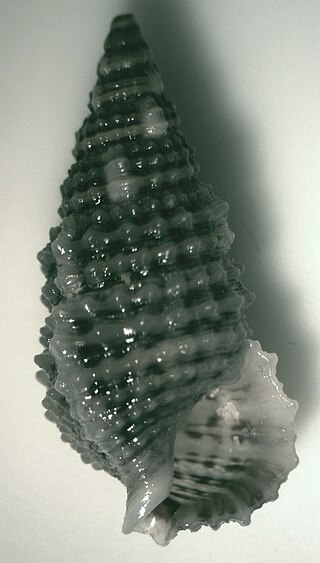
Cerithium tenellum is a species of sea snail, a marine gastropod mollusk in the family Cerithiidae.
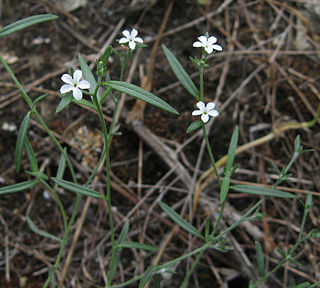
Heliotropium tenellum, the pasture heliotrope, is a species of plant in the heliotrope family. It is native to southeastern and south-central North America, where it is found in limestone glades and rocky prairies.
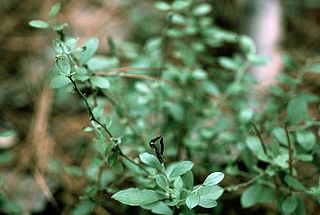
Vaccinium tenellum, the small black blueberry is a plant species native to the southeastern United States from southeastern Mississippi to northern Florida to southern Virginia. It grows in forests and in shrubby areas at elevations up to 200 m.
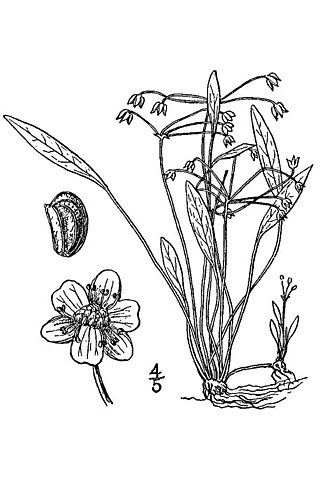
Helanthium tenellum, the pygmy chain sword, is a species of plants in the Alismataceae. It is native to the eastern United States, southern Mexico, West Indies, Central America, South America

Wellington College Bog is a 6.2-hectare (15-acre) biological Site of Special Scientific Interest in the grounds of Wellington College on the northern outskirts of Sandhurst in Berkshire.
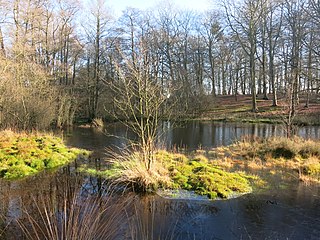
Sole Common Pond is a 3-hectare (7.4-acre) nature reserve south-west of Boxford in Berkshire in Berkshire. It is managed by the Berkshire, Buckinghamshire and Oxfordshire Wildlife Trust.

Pseudoanthidium tenellum is a species of bee in the family Megachilidae.

Atrichum tenellum, also known as the slender smoothcap, is a species of moss belonging to the family Polytrichaceae. It is red listed in Iceland as a critically endangered (CR) species. In Iceland, it is only found in two geothermal areas.














